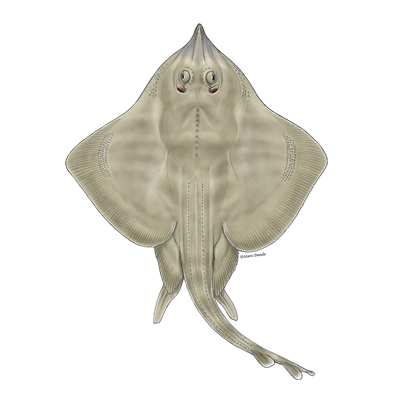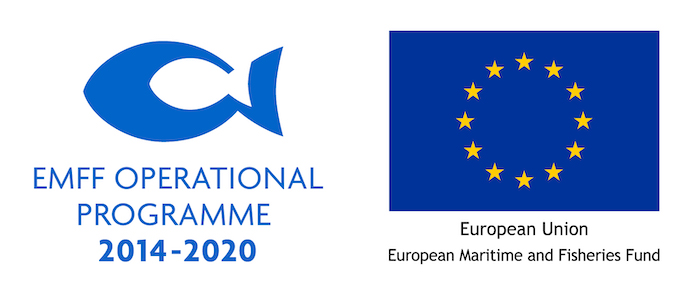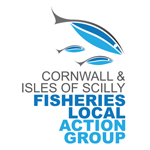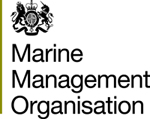

A large ray which gets its name from Shagreen, processed shark or ray leather with embedded skin teeth which has been prized for centuries for its quality and has been used in luxury upholstering, on the handles of swords and as an abrasive sandpaper. Marketed as skate wings.
Like all skates and rays shagreen rays are slow growing and produce a small number of eggs each year so are vulnerable to over fishing. They are relatively rare in our waters and although stocks are poorly studied their landings are decreasing, although seemed to have levelled slightly in recent years. They are caught as by catch in trawl and net fisheries usually in deep water.
In 2021 6.5 tonnes of shagreen ray were landed to Cornish ports, with a value of £6.7k (MMO landings data).
Updated July 2023
Cornwall (7e, 7f, 7g, 7h)
A large trawl held open by paravane trawl doors, the open net is then pulled along in contact with the seabed.
Learn moreCornwall (7e, 7f, 7g, 7h)
Caught using heavy beam trawl nets that are dragged over the seabed.
Learn moreCornwall Good Seafood Guide rates fish on sustainability using a scale of 1 to 5.
1, 2 and 3 are recommended, Fish to avoid are rated 5.
We use the system devised by the Marine Conservation Society (MCS) so our scores are comparable with the scores produced by MCS for the UK and fisheries from all around the world. For more information on scoring click here.
Skate and rays landing are managed through a mixed species Total allowable catch (quota). This is set by the EU and shared amongst member states. As it covers many species this is not ideal for the protection of each species. There is no specific management plan for demersal elasmobranchs and no management plan for this stock or any skate stock in the ICES area. Given the regional differences in skate assemblages and fisheries, ICES recommends that management measures for elasmobranchs be developed on a case-by-case basis.






Cornwall Good Seafood Guide is underpinned by the Marine Conservation Society (MCS) Good Fish Guide. The first UK consumer guide to sustainable seafood. For more information visit www.fishonline.org
Cornwall Good Seafood Guide is here to help us all make sustainable seafood choices. Choices that will help us keep the oceans healthy and Cornish fishers' futures safe. This website is funded by Cornwall Wildlife Trust. If you would like to make a meaningful difference to the health of our oceans, please consider making a donation to the Cornwall Wildlife Trust Ocean Emergency fund. Your donation will help safeguard these remarkable environments, ensuring that they continue to thrive for generations to come. Together, we can be stewards of the seas and champions for a healthier, more sustainable future.